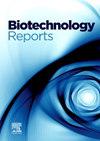Enhancing cell characterization with microfluidics and AI: a comprehensive review of mechanical, electrical, and hybrid techniques
Q1 Immunology and Microbiology
引用次数: 0
Abstract
This paper examines recent advancements in cell characterization using microfluidic devices, emphasizing mechanical, electrical, and hybrid methodologies. These technologies have substantially improved throughput, precision, and the range of cell types they can analyze. Key microfluidic technologies for cell characterization are reviewed, including label-free electrical and mechanical methods designed for high-throughput, real-time analysis. Microfluidic advancements in cell characterization are critically assessed, along with challenges such as operational complexity and the need for more adaptable, user-friendly platforms. The integration of AI and machine learning in microfluidic systems is also discussed, highlighting their crucial role in automating data analysis and enhancing classification accuracy, with implications for personalized medicine and advanced cellular assays.

用微流体和人工智能增强细胞表征:机械、电气和混合技术的综合综述
本文探讨了使用微流体装置的细胞表征的最新进展,强调机械,电气和混合方法。这些技术大大提高了通量、精度和细胞类型的分析范围。综述了用于细胞表征的关键微流体技术,包括用于高通量、实时分析的无标记电和机械方法。微流控技术在细胞表征方面的进步被严格评估,同时也面临着诸如操作复杂性和对适应性更强、用户友好的平台的需求等挑战。还讨论了微流控系统中人工智能和机器学习的集成,强调了它们在自动化数据分析和提高分类准确性方面的关键作用,对个性化医疗和先进的细胞分析具有重要意义。
本文章由计算机程序翻译,如有差异,请以英文原文为准。
求助全文
约1分钟内获得全文
求助全文
来源期刊

Biotechnology Reports
Immunology and Microbiology-Applied Microbiology and Biotechnology
CiteScore
15.80
自引率
0.00%
发文量
79
审稿时长
55 days
期刊介绍:
Biotechnology Reports covers all aspects of Biotechnology particularly those reports that are useful and informative and that will be of value to other researchers in related fields. Biotechnology Reports loves ground breaking science, but will also accept good science that can be of use to the biotechnology community. The journal maintains a high quality peer review where submissions are considered on the basis of scientific validity and technical quality. Acceptable paper types are research articles (short or full communications), methods, mini-reviews, and commentaries in the following areas: Healthcare and pharmaceutical biotechnology Agricultural and food biotechnology Environmental biotechnology Molecular biology, cell and tissue engineering and synthetic biology Industrial biotechnology, biofuels and bioenergy Nanobiotechnology Bioinformatics & systems biology New processes and products in biotechnology, bioprocess engineering.
 求助内容:
求助内容: 应助结果提醒方式:
应助结果提醒方式:


